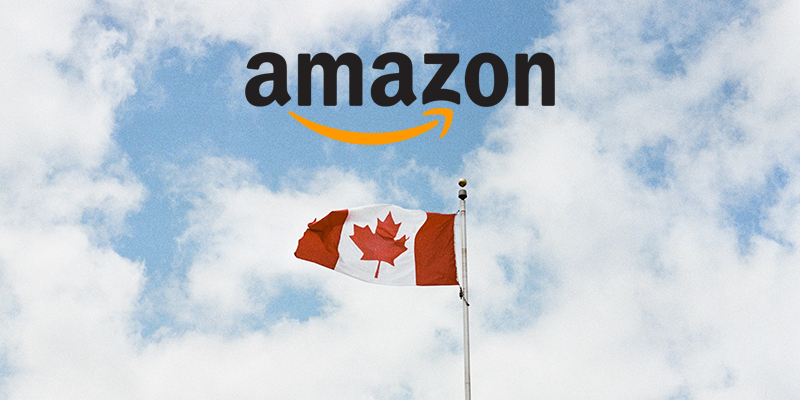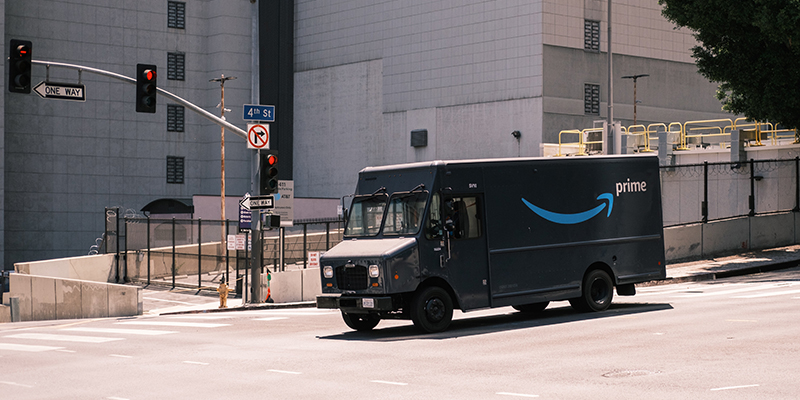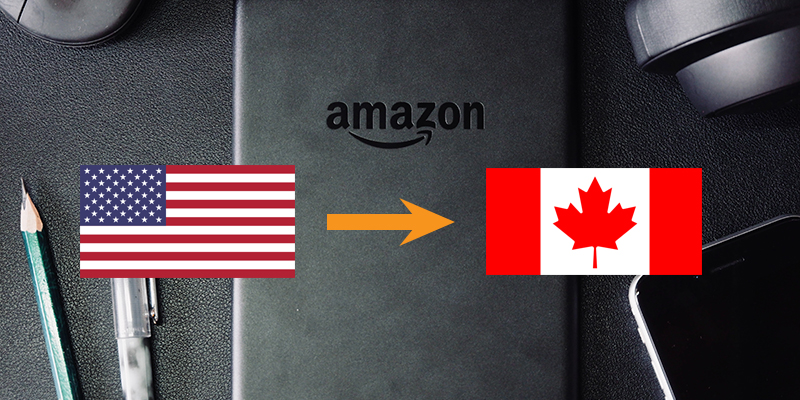If you’re selling on Amazon in the United States and looking to expand your business to a new country, Canada is your best option.
Right now, 23% of US marketplace sellers also sell on Amazon.ca. While Amazon.ca isn’t as big as Amazon.com, it’s growing fast and you can boost your sales by at least 10%.
Even though selling on Amazon in Canada can seem intimidating, Amazon makes it convenient by handling the taxes for you and offering automated shipping and logistics with the NARF program(more below).
In this post, you’ll learn everything you need to know about how to sell on Amazon Canada from the US, including how to add listings, tax rules, and some important tips to help you get started.
Are you interested in creating a strong, defensible brand for your products? If so, I put together a comprehensive package of resources that will help you launch your own online store from complete scratch. Be sure to grab it before you leave!
Why You Should Sell On Amazon Canada
Here are the top 4 reasons why you should sell on Amazon Canada:
Increase Your Sales By 10% Or More
Canada’s population is a little more than one tenth of the United States. As a result, you can expect around a 10% increase in sales for the same product that you sell in the US.
Another reason to sell on Amazon Canada is that Amazon.ca is the most visited ecommerce website in the entire country with 138 million monthly visits.
After Amazon.ca, Amazon.com (US) is the second most visited ecommerce website in Canada, with 45 million visits a month.
If Canadians find a product that’s not available on Amazon.ca, they’ll shop at Amazon.com or a different marketplace altogether.
By offering the same product in Canada as you offer in the US at a similar price, you can fill this gap and grow your online sales.
Lower Competition Than Amazon US
The competition in Amazon Canada isn’t as strong as Amazon US. In fact, many Amazon.ca sellers have experienced significantly higher conversion rates compared to Amazon.com.
As of today, only 240 Canadian sellers have surpassed $1 million in sales. In contrast, a whopping 60,000 sellers in the US have generated more than $1 million in sales.
Because the competition is lower, you are much more likely to rank a product on Amazon.ca compared to Amazon.com.
Early Mover Advantage
Compared to Amazon.com, Amazon.ca is growing at a faster rate with no signs of slowing down.
Because most sellers are reluctant to expand to other countries, you can lay an early claim to your product listings.
As Amazon continues to expand its presence in Canada by adding more fulfillment centers, the competition will eventually rise.
Building a presence on Amazon.ca and having reviews before other sellers will help you build a moat.
Simpler Sales Tax Rules
In 2021, Canada introduced new Marketplace Tax Collection (MTC) rules where Amazon is responsible for the collection and remittance of taxes for the products you sell on Amazon.ca.
Even if you are not registered for Canada’s Goods Services Tax(GST) or Harmonized Sales Tax(HST), Amazon will pay sales tax on your behalf.
The 2 Ways To Sell On Amazon Canada From The US
There are 2 ways to sell on Amazon Canada from the United States, North America Remote Fulfillment(NARF) and Amazon FBA Canada.
North American Remote Fulfillment(NARF)
North American Remote Fulfillment(NARF) is an Amazon program that allows you to sell your products in Canada and Mexico without having to stock your products in those countries.
Once you enroll in NARF, Amazon displays your products on Amazon.ca. When a customer places an order for your product, Fulfillment by Amazon (FBA) in the US sends your products directly to the Canadian customer.
In case of returns, the products are shipped back to the US.
The NARF program offers Prime customers free shipping in Canada, which is around 7 to 12 days.
Essentially, Amazon makes your inventory in the US centralized by making it available on Amazon.ca and Amazon.mx. The best part about using NARF is that Amazon handles taxes, shipping, and import duties for you.
However, there are downsides to using NARF.
- Adds extra costs to the customer – Canadian customers must pay all applicable duties and taxes for their purchase.
- Shipping times are long – US to Canada shipping is typically 7 to 12 days.
- Sales will be lower – The added costs and shipping times will lower your sales dramatically compared to using Amazon FBA in Canada.
Overall, the NARF program can be a great starting point for US sellers to explore the Canadian market and for those who don’t want the headache of sending inventory directly to Canada.
Amazon FBA Canada
The best way to sell in Amazon Canada is to use Amazon FBA Canada because customers will receive their products faster at lower prices.
Sending your products from the US into a Canadian Amazon fulfillment center is similar to Amazon FBA in the US. The main difference is that Amazon CA does not have any partner carriers for cheap inbound shipping.
As a result, you must find your own carriers to ship inventory to Amazon. No matter what carrier you use, you must make sure all import taxes, duties are paid ahead of time or else Amazon may reject your shipment.
In addition, you will need a Canadian Business Number to formally import your products into Canada. Please check the Canada Border Services Agency for more information.
Do You Need A Registered Canadian Business To Sell in Canada?
You do not need a registered business in Canada or a Canadian bank account to sell on Amazon.ca.
Amazon will pay sales tax on your behalf for most of Canada’s provinces except for British Columbia, Manitoba, Quebec and Saskatchewan.
If you are not using NARF, you must register for GST/HST and a Canada Business Number.
Overall, to sell on Amazon.ca…
- You don’t have to worry about Canadian income tax
- You don’t need a Canadian bank account
- You don’t need to worry about sales tax except for British Columbia, Manitoba, Quebec and Saskatchewan. These provinces will likely be a small portion of your sales.
- Get a Business Number and register for GST/HST if you plan on using Amazon FBA Canada.
How To Sell On Amazon Canada From The US
Follow these 5 steps to sell on Amazon Canada from the US:
Step 1: Get A North American Unified Account(NAUA)
Amazon offers a North American Unified Account (NAUA) that allows you to display your Amazon.com listings on Amazon.ca and Amazon.mx.
NAUA is a convenient solution for sellers who want to sell in the US, Canada and Mexico from a single Seller Central account. In addition, your Amazon.com reviews will transfer over to your Amazon.ca listings.
To verify that your account is enabled for NAUA, look for a “store switcher” in your seller account header. If it’s not available, contact Amazon and your request for NAUA should be approved within a few days.
Step 2: Transfer Your Listings From Amazon.com Listings To Amazon.ca
To add Amazon.com listings to Amazon.ca, follow these steps:
- Once your NAUA account is approved, go to your seller name at the top of Seller Central and choose Canada from the dropdown menu.
- Go to the Inventory tab and click “Add a product.”
- Enter the ASIN from your Amazon.com product listing and then click search.
- Amazon preloads the existing bullet points, descriptions, and images. You can edit your bullet points and descriptions if needed.
- Click “Sell this product” and move on to the next page.
- Once you land on the offer page, enter the product price, SKU, condition, and fulfillment method.
Tip: Google “USD to CAD” to figure out how much you should price your Canadian listing. Enter the product price in USD in the currency converter and add the corresponding price.
Step 3: Send Inventory To Amazon FBA Canada Or Sign Up For NARF
If you’re sending inventory to Amazon FBA Canada, start by shipping a single carton to test the market.
The procedure to send goods to Amazon.ca is similar to sending to Amazon.com. The only difference is you’ll need to pay import duties and taxes upfront.
Since Amazon Canada does not have partnered carriers like the US, you’ll have to find a carrier that has DDP services to ship inventory to Amazon.
FedEx, UPS, and DHL are highly recommended. But make sure you don’t use USPS as Amazon will be asked to pay taxes on your product as soon as it arrives in Canada. This will lead to Amazon rejecting your shipment.
Once you arrange a carrier for your FBA shipment and print your carton labels, go to Seller Central and add your tracking number.
If you decide to use NARF, you don’t have to do anything. Visit Amazon’s Remote Fulfillment with FBA help page to learn more about how to enroll.
Step 4: Register For GST/HST
You can get away with not registering for GST/HST for your first shipment. But in general, if you’re sending less-than-truckload (LTL) shipments, you must register for a Canadian business number.
The Canadian business number is similar to the US EIN and is used to collect and remit GST/HST. To learn more about registering a business number in Canada, visit the business registration page.
Make sure you tick the checkboxes for GST/HST and Importer numbers when filling out the RC1 business registration form.
You can also use a customs broker to help you with the registration part in Canada. Look for a customs broker who is familiar with US sellers on Amazon.ca.
Step 5: Turn On Sponsored Ads For Canada
You should start running Amazon Sponsored Products Ads so that your products will appear on shopping results pages and product detail pages as soon as they reach FBA Canada.
Follow the same best practices as you would with your Amazon.com account as you would with Amazon.ca.
Things You Must Know Before Selling On Amazon.ca
Here are the top 5 things you need to know before you start selling on Amazon.ca from the US:
Amazon FBA Fees Are Higher In Canada
Amazon.ca recently increased its Amazon FBA fees between 8% to 30% as of June 20, 2022. There’s now a higher base fulfillment fee and a 5% fuel and inflation surcharge across all categories.
When you compare the Amazon FBA fees in the US and Canada, you’ll notice that the fulfillment fee is significantly higher in Canada, especially for small and standard-size items.
Tip: Use the FBA calculator to figure out your exact costs for selling in Canada.
The Exchange Rate Is Not Stable
Most sellers charge the same price on Amazon.ca as they charge on Amazon.com. However, the exchange rate can be volatile.
Although the American dollar is worth more than the Canadian dollar as of this writing, the exchange rate fluctuates drastically from week to week.
Make sure you keep an eye on the exchange rate and adjust your prices accordingly.
You Need A Business Number To Import Into Canada
You’ll need a Canadian business number if you’re personally sending goods to Canadian customers or using an Amazon fulfillment center in Canada.
To register your business, go to the Canada government’s business registration page and fill out the form online. After receiving a business registration number, you can get a free import-export account in a matter of minutes.
To make things easier, hire a licensed customs broker to deal with the Canada Revenue Agency and Canada Border Services Agency.
Canada’s Tax System
Canada has two main types of taxes:
- Federal Sales Tax (FST): It’s also called Goods and Services Tax (GST) or Harmonized Sales Tax (HST). Each of Canada’s 13 provinces has its own GST/HST rate.
- Provincial Sales Tax (PST): It’s also known as the Quebec Sales Tax (QST), or Retail Sales Tax (RST). Only 4 out of the 13 provinces have PST: British Columbia, Quebec, Manitoba, and Saskatchewan.
To simplify selling in Canada, the Canadian government rolled out Marketplace Tax Collection (MTC) rules in 2021. If you’re not registered for GST/HST, Amazon collects and remits GST/HST for you.
You should consult a tax advisor in Canada to know your tax obligations.
Ship Using A DDP (Delivered Duty Paid) Service
If you’re shipping to Amazon FBA in Canada, make sure you pay all the duties and taxes before your shipment arrives in the warehouse. Otherwise, Amazon will reject your shipment.
You can use UPS or FedEx and use their DDP services to pay all the fees in advance. Do not use USPS!
Start Selling On Amazon Canada From The US
At a bare minimum, you should enable NARF so that your products are listed on Amazon.ca and Amazon.mx. There’s no cost or effort to enable this feature.
But if you want to significantly grow your sales on Amazon Canada, you need to use Amazon FBA.
Thanks to the new MTC rules, Amazon takes care of all of your sales tax filings so you can concentrate on selling. Today, expanding your sales to Canada is easier that ever.

Ready To Get Serious About Starting An Online Business?
If you are really considering starting your own online business, then you have to check out my free mini course on How To Create A Niche Online Store In 5 Easy Steps.
In this 6 day mini course, I reveal the steps that my wife and I took to earn 100 thousand dollars in the span of just a year. Best of all, it's free and you'll receive weekly ecommerce tips and strategies!
Related Posts In Getting Started On Amazon
- How To Sell Used Items On Amazon (A Step By Step Guide)
- How To Create An Amazon FBA Shipping Plan – The Ultimate Guide
- How To Avoid Paying Amazon Seller Repay Charges
- The Truth About Selling On Amazon That No One Talks About
- Shipping Marks: A Guide To Marking And Labeling Shipments

Steve Chou is a highly recognized influencer in the ecommerce space and has taught thousands of students how to effectively sell physical products online over at ProfitableOnlineStore.com.
His blog, MyWifeQuitHerJob.com, has been featured in Forbes, Inc, The New York Times, Entrepreneur and MSNBC.
He's also a contributing author for BigCommerce, Klaviyo, ManyChat, Printful, Privy, CXL, Ecommerce Fuel, GlockApps, Privy, Social Media Examiner, Web Designer Depot, Sumo and other leading business publications.
In addition, he runs a popular ecommerce podcast, My Wife Quit Her Job, which is a top 25 marketing show on all of Apple Podcasts.
To stay up to date with all of the latest ecommerce trends, Steve runs a 7 figure ecommerce store, BumblebeeLinens.com, with his wife and puts on an annual ecommerce conference called The Sellers Summit.
Steve carries both a bachelors and a masters degree in electrical engineering from Stanford University. Despite majoring in electrical engineering, he spent a good portion of his graduate education studying entrepreneurship and the mechanics of running small businesses.
















